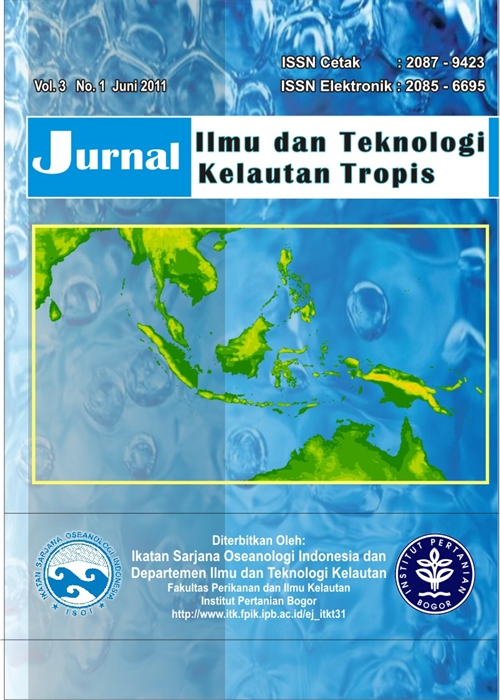POTENTIAL ENERGY OF OCEAN CURRENT FOR ELECTRIC POWER GENERATIONIN COASTAL AREAS OF EAST FLORES, NTT
Abstract
The electrical energy is one of the important needs for coastal communities particularly in small islands that has not reached by national electricity network. In order to fulfill this particular electricity needs, we do variety diversification efforts, such as the utilization of the ocean currents. The purpose of this survey is to recognize the morphology of seafloor and characteristic of hydro-oceanography as a fixed reference location in using the current energy. The study area is in the Larantuka Strait between Flores and Adonara islands which is part of the Flores Strait, East Nusatenggara Province. The methods of this study are current measurements, tidal and meteorological parameter observations, condition of coastal morphology and seafloor of the study area. The result show that, the location for turbine position is in area with relatively gentle slope morphology at a 20 meters water depth and it is close to local community. Based on the analysis of ADCP mobile current measurement, the minimum current velocity is 0.004 m/sec and maximum 3.68 m/sec. Whereas, from the ADCP static measurements the current velocity is from 0.002 m/sec to 2.83 m/sec. This condition is closely related to the semi-diurnal tide type in the study area, with two pairs of flood and web events within 24 hours. Therefore, the results of ocean current energy analysis indicate that the study area is very potential for using as a power plant location.
Keywords: potential energy of ocean currents, power plants, energy diversification, Larantuka Strait, East Flores
Authors
This work is licensed under a Creative Commons Attribution 4.0 International License.
Jurnal Ilmu dan Teknologi Kelautan Tropis i is an open-access journal, meaning that all content is freely available without charge to the user or their institution. Users are allowed to read, download, copy, distribute, print, search, or link to the full texts of the articles in this journal without needing to request prior permission from the publisher or the author.
All articles published by Jurnal Ilmu dan Teknologi Kelautan Tropis are licensed under the Creative Commons Attribution 4.0 International License. This allows for unrestricted use, distribution, and reproduction in any medium, provided proper credit is given to the original authors.
Authors submitting manuscripts should understand and agree that the copyright of published manuscripts is retained by the authors. Copyright encompasses the exclusive rights of authors to reproduce, distribute, and sell any part of the journal articles in all forms and media. Reproduction of any part of this journal, its storage in databases, and its transmission by any form or media is allowed without written permission from Jurnal Ilmu dan Teknologi Kelautan Tropis.


